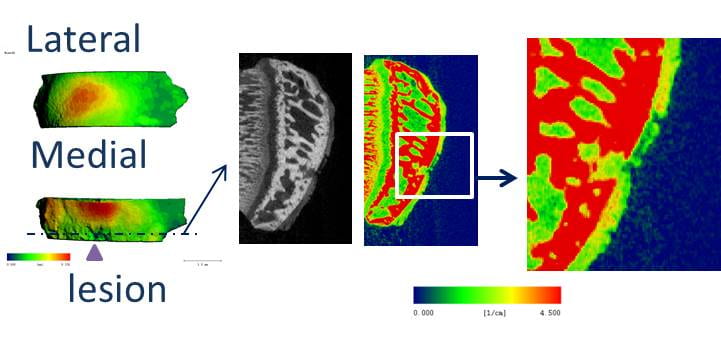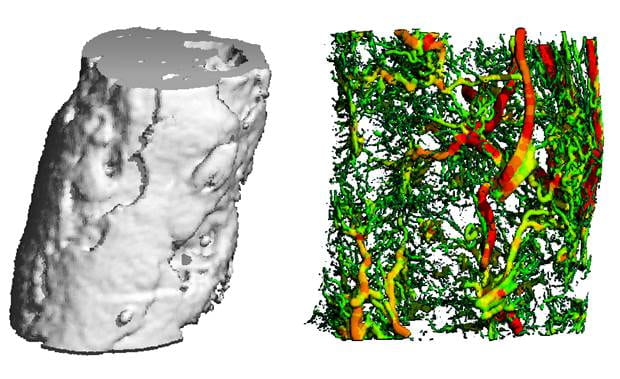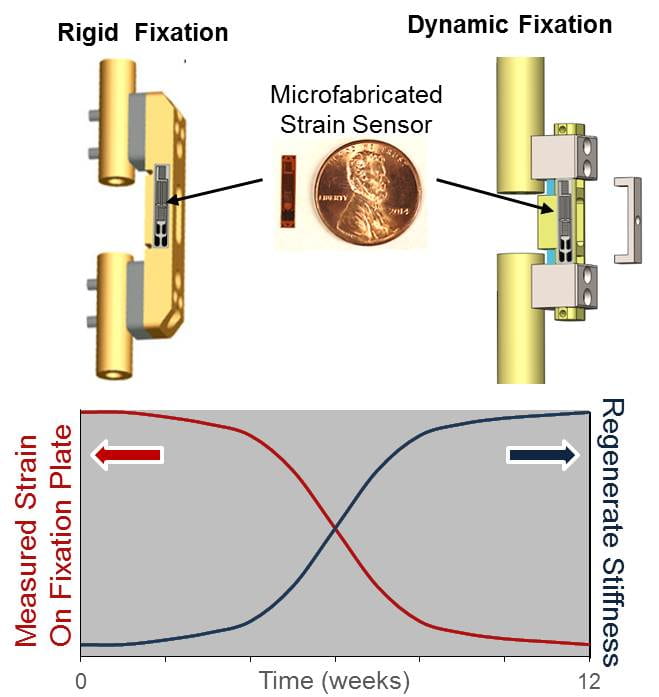Research
Osteoarthritis
Osteoarthritis (OA) is a debilitating condition affecting all tissues of articular joints. It is a significant socioeconomic burden in the general population costing the US an estimated $128 billion per year. Current treatments for OA either involve invasive surgical procedures or pharmacological intervention primarily for pain relief; however, effective pain relief for OA is limited and, remarkably, no disease-modifying OA drugs are currently FDA approved. With the poor outcomes after current treatment modalities, there is a need to better understand the etiology of OA and to develop novel strategies to prevent or mitigate disease development and progression.
We have been developing a variety of regenerative approaches including microcarrier-based stem cell delivery, ECM-based therapeutics, and small molecules delivery. In addition, we are investigating the role of the lymphatics system both in the disease process and also as a potential therapeutic target. Our work spans tissue culture models, pre-clinical translational models, and clinical trials.
Extremity Trauma
Extremity trauma has been the predominant cause of combat casualties for U.S. armed forces members in recent military conflicts. These injuries often result in long-term functional disabilities, pain, and neurologic dysfunction. Our work utilizes preclinical models of extremity trauma to test new tissue-engineered therapies in combination with rehabilitation regimens. The overall objective of this work is to develop novel tissue-engineered therapies–combining new biomaterials, stem cells, and biologics–for muscle and bone defects and improve the physical rehabilitation methods used for treating multi-tissue trauma. Some of our current projects include:
- Development of pre-vascularized bone constructs as tissue-engineered therapeutics and microphysiologic systems
- Investigation of the role of osteopontin in MSCs
- Development and biological evaluation of porous, patient-specific interbody fusion devices
Biomechanics of Bone Regeneration
Bone is regarded as a dynamic “mechanostat,” which constantly remodels its structure in accordance with mechanical demands. Our group has developed a segmental bone defect model to isolate the role of mechanical signals in skeletal regeneration. While it has been established that ambulatory load transfer supports successful bridging, the precise mechanisms dictating this process are unknown due to limitations in longitudinally assessing the local mechanical environment in vivo. We will leverage recent advances in biocompatible microelectromechanical systems (MEMS) technology to monitor mechanical loads on regenerating tissue in vivo with unprecedented spatiotemporal resolution. The insights offered by MEMS instrumentation will underpin the development of image-based finite element models which will serve as a parametric design space to address fundamental questions in bone mechanobiology, and to guide translational improvements of novel regenerative strategies through predictive computational simulations.



